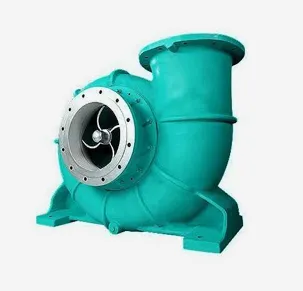Dutch
- Afrikaans
- Albanian
- Amharic
- Arabic
- Armenian
- Azerbaijani
- Basque
- Belarusian
- Bengali
- Bosnian
- Bulgarian
- Catalan
- Cebuano
- Corsican
- Croatian
- Czech
- Danish
- Dutch
- English
- Esperanto
- Estonian
- Finnish
- French
- Frisian
- Galician
- Georgian
- German
- Greek
- Gujarati
- Haitian Creole
- hausa
- hawaiian
- Hebrew
- Hindi
- Miao
- Hungarian
- Icelandic
- igbo
- Indonesian
- irish
- Italian
- Japanese
- Javanese
- Kannada
- kazakh
- Khmer
- Rwandese
- Korean
- Kurdish
- Kyrgyz
- Lao
- Latin
- Latvian
- Lithuanian
- Luxembourgish
- Macedonian
- Malgashi
- Malay
- Malayalam
- Maltese
- Maori
- Marathi
- Mongolian
- Myanmar
- Nepali
- Norwegian
- Norwegian
- Occitan
- Pashto
- Persian
- Polish
- Portuguese
- Punjabi
- Romanian
- Russian
- Samoan
- Scottish Gaelic
- Serbian
- Sesotho
- Shona
- Sindhi
- Sinhala
- Slovak
- Slovenian
- Somali
- Spanish
- Sundanese
- Swahili
- Swedish
- Tagalog
- Tajik
- Tamil
- Tatar
- Telugu
- Thai
- Turkish
- Turkmen
- Ukrainian
- Urdu
- Uighur
- Uzbek
- Vietnamese
- Welsh
- Bantu
- Yiddish
- Yoruba
- Zulu
Telephone: +86 13120555503
Email: frank@cypump.com
dec . 22, 2024 09:07 Back to list
slurry tanker pump parts
The Essential Components of Slurry Tanker Pump Parts
Slurry tanker pumps are vital in various industries, particularly in construction, agriculture, and wastewater management. They are designed to handle the challenging task of transporting viscous, abrasive, and heavy materials in the form of slurry, a mixture of liquid and solid particles. Understanding the key components of slurry tanker pumps is crucial for effective operation, maintenance, and troubleshooting. This article will delve into the essential parts of slurry tanker pumps and their functions.
1. Pump Casing
The pump casing is the external structure that encloses the pump components. It is designed to withstand high pressure and is usually made from high-strength materials such as cast iron or stainless steel. The casing not only protects the internal components but also maintains the pump’s efficiency by directing the flow of slurry towards the discharge outlet.
2. Impeller
The impeller is one of the most critical parts of the slurry pump, responsible for imparting energy to the slurry and facilitating its movement. The design of the impeller can vary based on the type of slurry being transported. For instance, open impellers are often used for slurries with larger particles, while closed impellers are suited for finer slurries. The material of the impeller must also be chosen carefully to resist wear from abrasive materials.
3. Suction and Discharge Flanges
The suction and discharge flanges are connection points for the slurry tanker pump. The suction flange is where the slurry enters the pump, and it requires a tight seal to prevent any leakage. Conversely, the discharge flange is where the slurry exits the pump. Both flanges must be robust and capable of handling the pressure generated within the pump during operation.
4. Wear Plates
Wear plates are essential components that protect the pump casing and impeller from the heavy wear caused by abrasive slurries. Over time, these plates can become worn down and require replacement. Many pumps are designed with replaceable wear plates, allowing for easier maintenance and extending the life of the pump.
slurry tanker pump parts

5. Stuffing Box and Seals
The stuffing box is an assembly designed to contain the lubricating fluid and prevent leakage at the shaft where it exits the pump casing. Effective sealing is crucial in preventing contamination of the slurry and maintaining pump efficiency. Modern slurry pumps often utilize mechanical seals or packing seals, which offer better performance and longevity compared to traditional sealing methods.
6. Drive System
The drive system is responsible for converting rotational energy into hydraulic energy within the pump. This system can be powered by electric motors, diesel engines, or hydraulic systems, depending on the application and the environment. A reliable drive system is critical for the pump's performance and should be regularly maintained to ensure optimal operation.
7. Baseplate and Mounting
The baseplate provides a stable and secure foundation for the slurry tanker pump. It is designed to absorb vibrations and prevent movement during operation, which can lead to misalignment and premature wear. Proper mounting ensures that the pump operates efficiently and helps maintain the integrity of connected piping.
8. Control Panel
Modern slurry tanker pumps often come equipped with a control panel that allows operators to monitor performance metrics such as flow rate, pressure, and operational hours. Some control panels also include automated systems that adjust pump performance based on real-time data, improving efficiency and reducing the risk of damage.
Conclusion
Understanding the essential parts of slurry tanker pumps is critical for anyone involved in industries utilizing this technology. Each component plays a specific role in ensuring the pump's efficiency, longevity, and reliability. Regular maintenance and timely replacement of worn parts can significantly enhance the operational capabilities of slurry tanker pumps, ensuring that they continue to perform effectively in demanding environments.
-
ISG Series Vertical Pipeline Pump - Chi Yuan Pumps Co., LTD.|High Efficiency, Energy Saving, Low Noise
NewsJul.30,2025
-
ISG Series Vertical Pipeline Pump- Chi Yuan Pumps|High Efficiency&Low Noise
NewsJul.30,2025
-
ISG Series Vertical Pipeline Pump-Chi Yuan Pumps Co., LTD.|High Efficiency&Energy Conservation
NewsJul.30,2025
-
ISG Series Vertical Pipeline Pump - Chi Yuan Pumps Co., LTD.|Advanced Hydraulic Design&Energy-Efficient Solutions
NewsJul.30,2025
-
ISG Series Vertical Pipeline Pump - Chi Yuan Pumps Co., LTD.
NewsJul.30,2025
-
ISG Series Vertical Pipeline Pump - Chi Yuan Pumps Co., LTD.|energy-efficient fluid handling&industrial durability
NewsJul.30,2025










